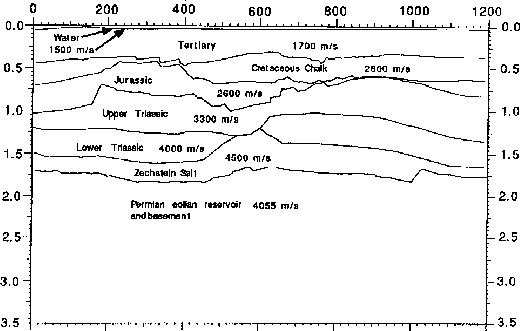




Next: APPLICATION OF AMO TO
Up: INTEGRAL IMPLEMENTATION OF AMO
Previous: Operator antialiasing
The expression for the kinematics and amplitudes of AMO
[equations (6 and 7)] are valid for
 and
and  ranging between -1 and 1. However, for finite
propagation velocities, the AMO operator has a much narrower aperture,
as shown in appendix C. Taking into account this finite aperture is
crucial both for accuracy and for efficiency. For a given minimum
propagation velocity Vmin, the maximum output time can be
evaluated according to the following expressions:
ranging between -1 and 1. However, for finite
propagation velocities, the AMO operator has a much narrower aperture,
as shown in appendix C. Taking into account this finite aperture is
crucial both for accuracy and for efficiency. For a given minimum
propagation velocity Vmin, the maximum output time can be
evaluated according to the following expressions:
|  |
(10) |
| (11) |
|  |
(12) |
To avoid truncation artifacts, we recommend the use of a tapering
function at the edges of the operator aperture.
geoltr
Figure 5
Geological in-line section and corresponding velocities of layers.
From (Hanson and Witney, 1995).






Next: APPLICATION OF AMO TO
Up: INTEGRAL IMPLEMENTATION OF AMO
Previous: Operator antialiasing
Stanford Exploration Project
6/14/2000



